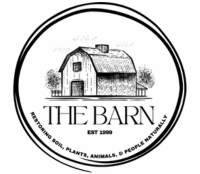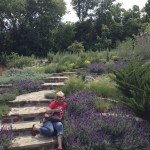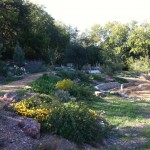Understanding permaculture brings clarity, awakens dreams, and makes an abundant beyond sustainable life possible.
This page is an introduction to a culture of permanence both with our natural environment and one another.
Currently under construction!
Please see the course page for more information.
—————————————————————————
Elizabeth Anna hosts the PCDD every year with Wayne Weiseman.
This course is primely a design course, yet many opportunities for hands on learning are made possible by those that collaborate with us; for example, we have our meetings at community minded places such as healing art centers, intensional communities and fellowships. As a way to participate in their vision we take them on as practice clients and begin the process of permaculture design assessment, and site evaluation. The brilliant part of this work is the students actually get to perform part of the design during our hands on work which in turn gives students a better understanding of the design tools, and principals they are learning, and blesses the community with site improvement where we are gathering.
Wayne Weiseman and The Permaculture Project is certified by the American Institute of Architecture, and their continuing educational program. Wayne is thought to be the best instructor in the nation and one of the best in the world. He is a dear friend and collaborator with us at Elizabeth Anna’s Urban Farm.
Licensed architects and landscape architects are required to take continuing education courses in order to keep their licenses current.
Because our current ecological and economic climate requires us to look deeply at issues of environmental degradation, overwhelming financial constraints and a depleted resource base, Permaculture offers a comprehensive system of solutions in these trying times.
Some of the areas explored during the certification course are:
- Permaculture principles; concepts and themes in design
- The local ecosystem
- Forms of eco-gardening and farming
- Broad scale, bioregional site design
- The application of specific methods, laws and principles to design
- Pattern understanding and observation skills; climatic factors
- Plants and trees and their energy interactions; water: collection, storage, purification
- Soils
- Earth-working and earth resources
- Infrastructure and roads
- Zone and sector analysis
- Food forests and small animal husbandry, forest management
- Cropping and large animal husbandry
- Harvest and utility forests
- Natural forests
- Land and forest restoration
- Aquaculture
- Planning the homestead
- “Green” structures, ecological building practice
- Equipment, tools, bio-fuels and vehicles
- Renewable energy, system design and implementation
- Energy conservation
- Biological waste management and recycling
- Strategies for different climates
- Urban and suburban strategies; project planning, budgets and timelines
- Political, social, economic issues and solutions
- Designing sustainable economy
- Human settlement and local ecology
- Site selection, mapping and modeling
- Dividing, distributing, apportioning land
- Practical work on design.











